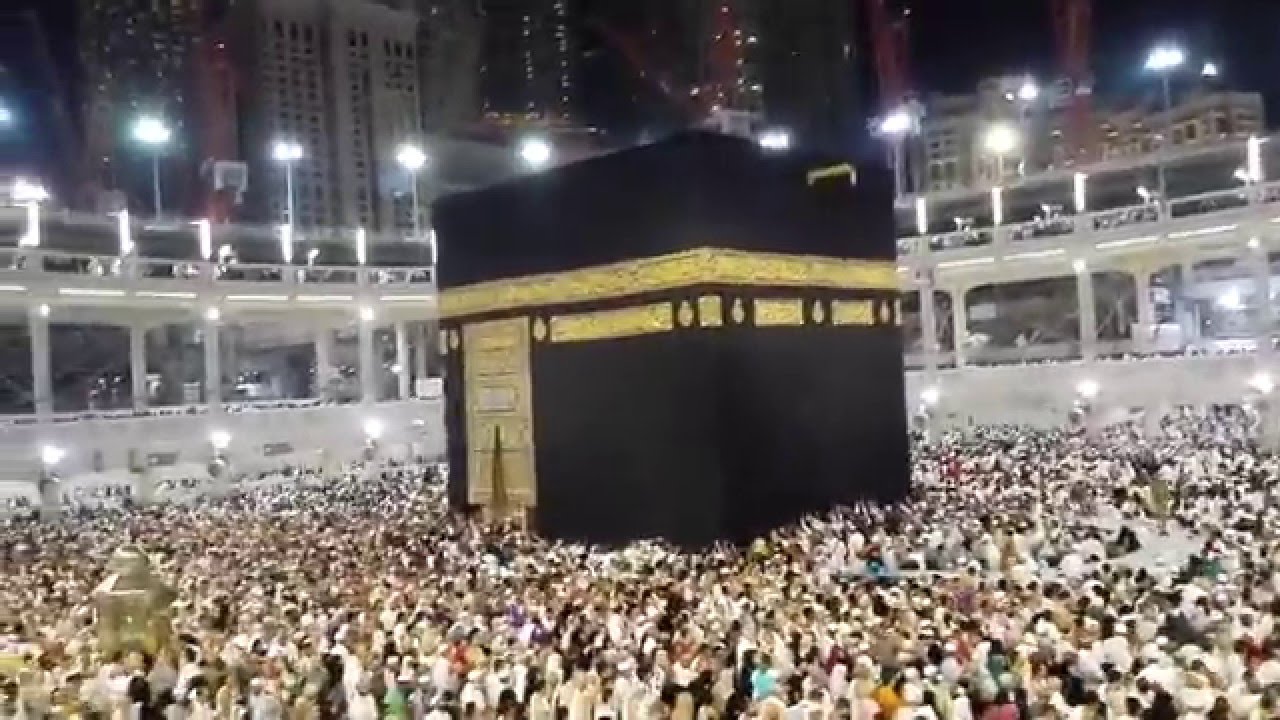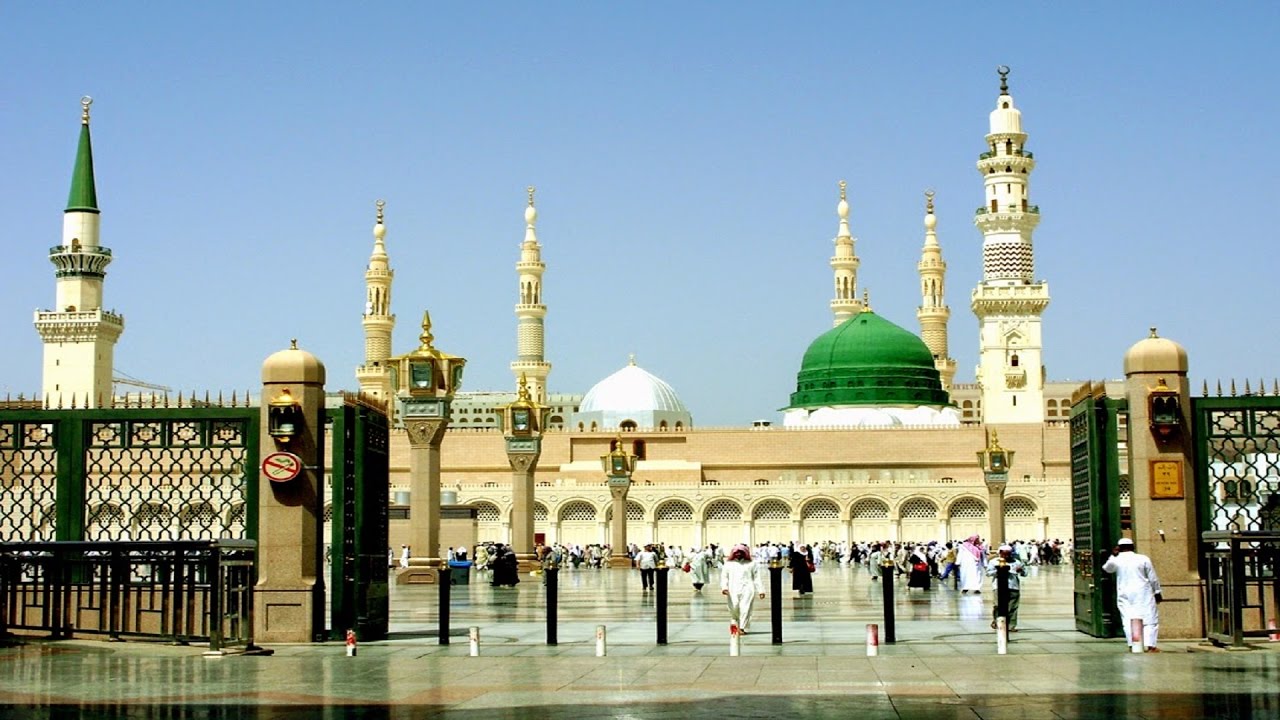Dars e Imam-Elevation Of Graves
“Bismillahir Rahmannir Raheem””Al-Hamdu Lillaahi Rabbil ‘Aalameen was Salaatu was- Salaamu ‘Alaa Sayidinaa Muhammadin wa Aalihi wa Asabihi Ajma ‘een (tauheed- risalat- ahkirat and islam-iman-ihsan)
On issue of elevation
of graves
Sahih Bukhari vol 2 book 23 Hadith 473
Narrated Abu Bakr bin ‘Aiyash : Sufyan At-Tammar told me that he had seen the grave of the Prophet elevated
and convex.
It is established that the Prophet placed a rock on top of `Uthman ibn Maz`un’s (ra) grave saying:With it I
shall designate the grave of my [milk-]brother and later bury in it whoever
dies among my relatives -Abu Dawud,al-Bayhaqi in al-Kubra (3:412) with
fair chains cf Ibn Hajar,
The complete report states that the
Prophet asked a man to place a rock on top of Ibn Maz`un’s grave; when he was
unable to move it, he rolled up his sleeves and helped him and the whiteness of
his arms was visible. Ibn Maz`un was the first of the Muhâjirûn buried in Baqi
al-Gharqad.Ibrahim(the Prophet’s son) was buried next to him. .”
Another Sahih Hadith from Imam Bukhari (Rah) himself -Kharija ibn Zayd said: I can see myself when we were young men
[boys]
in the time of Uthman [ibn `Affan](ra)The strongest one of us in high jump was he who could jump over the grave of `Uthman ibn Maz`un and clear it by al-Bukhari in his Sahih chapter-title, “[Placing] a Stalk on Top of the Grave.”Ibn Hajar said in Fath al-Bari (3:256=1959 ed. 3:223 cf. Taghliq al-Ta`liq):”Al-Bukhari narrated it with its chain in al-Tarikh al-Saghir (1:42)
It contains a proof for
the licitness of raising high the grave and elevating it above the surface of
the earth,In second hadith it says high jump by sahabas (Ra) which is only possible if grave is high.Imam
al-Shawkani admitted that the Salaf
built up the graves high as proved from above
Imam Ibn Hibban (rah) -the great Muhadith from Islaaf as Saliheen (rah) [d. 354
AH] said regarding visitation to tomb of Imam Ali Raza bin Musa (ra): I have
done ziyarah of his tomb many times, during my stay at Tus, whenever I got into any difficulty I went to
the grave of Imam Musa raza (ra) and asked Allah for the fulfillment of my
need, every time I was answered and my difficulty was removed. This is
such a reality that I found it to be true nomatter how many times I did it May Allah grant us death in the true love for
Prophet (Peace be upon him) and his blessed Ahlul Bayt. [Ibn Abi Hatim
Razi, Kitab al Thiqat, Volume No. 8, Page No. 457, Number: 14411]
Note: Tombs ,Shrines
[mizars]
are only build around graves of Prophets [alehislam] and awliyas
[rah]
, Not public graves. The–, refer to a set of narrations which they claim is proof
that tombs and elevated marking of graves are prohibited in Islam. In the
following, it will be explained why those narrations have nothing to do with
tombs or with elevated marking of a grave:
Wahhabi Distortion of the narration
cursing Jews and Christians
The narrations misused are those that relate the curse upon the Jews and
Christians for taking the graves as “masajid”, or building a masajid
at their
graves. They interpret this to mean that it is a prohibition of
building a tomb.This false argument is based on half quoting the narration. In
the other half of the narration, Aisha(radiAllahu anha) clarifies its meaning
by making reference to the burial of Prophet Muhammed ﷺ within her room. She says:“Had
it not been so, his (Prophet’s) grave would have been in an open place, but it
could not be due to the fear that it may not be taken as a masajid.”-
Meaning, because of the fear that there might occur the practice of what the
cursed from the Jews and Christians did, they did not rest the Prophet ﷺ in an open place. This proves that the curse upon Jews and Christians was not for having graves within a
closed place or a house(bayt). For if that was the case then it would imply
that the sahabah took the caution of the curse of Prophet ﷺ against
Jews and Christians by doing the very act that brought about the curse. Therefore,
these narrations are not in any sense a prohibition of having a bayt or
structure with a grave in it. As we see from this narration itself, the concept of taking the grave as masajid,
has got nothing to do with whether the grave is in a closed building or a open
place.
– This also proves that the one
who claims such closed structures over tombs should be destroyed as it
“leads to shirk” or “immitation of Jews and Christians” are
wrong, as the sahabah instead feared that the open place would lead to
imitation of Jews and Christians rather than the closed structure.
– This action of the sahabah to rest the Prophet ﷺ within the room of Aisha (radiAllahu anha) also proves that the
narrations which prohibit “building over a grave” has got nothing to do with a
grave being within a closed structure or a bayt(house). The meaning of prohibition of building over them is understood with the
same meaning of prohibition of “sitting over them” or “stepping over them”
which are mentioned in continuity with those same narrations. Just as prohibition of sitting or stepping
over them does not prohibit sitting or stepping besides the
grave, similarly the
prohibition of building over them does not imply prohibition of building around
them.
Other narrations proving the legality of bayt or strucure over the
grave are: Ibn Abi Shayba (3:217) recorded that ‘Umar built a large structure
(fustat) over the tomb of Zaynab. A structure was pitched on the grave of
Aisha(radiAllahu anha)’s brother Abdrahman bin Abi Bakr(Fathul Bari vol3,
p286). Fatima bint Husayn built a large tent over the grave of her husband
Hasan ibn Hasan ibn ‘Ali and kept it for a year, then removed it (Fath
Bari3:200, Ibn ‘Asakir 70:19-20, Ibn Abi Dunya’s Hawatifp. 92 #131). Muhammad
ibn Hanafiya built a fustat over the grave of Ibn ‘Abbas (Khalili’s
Irshad1:185, Ibn ‘Abd al-Barr’s Isti’ab).
As explained above, the curse was not with respect to the existance of a bayt
over the grave and they on the contrary feared in making the grave open and
prominent. Therefore, the reasons for the curse could be interpreted as either
of the following:
1) Prostrating towards the grave.
2) Praying towards the grave, I.e with grave as qiblah.
3) Praying on top of the grave.
4) Using the area besides the grave for prayer or prostration(to Allah).
5) Building a house of worship containing the grave.
6) Frequently visiting the graves
There are no other possible meaning for that hadith. Now, from these possible
meanings, the prohibition of first three is agreed upon by all and no one
disputes on this matter. Those who accuse ahlus sunnah of permitting this are
liars, as the ulema of ahlus sunnah did prohibit those actions. The following
hadiths are from the proofs for this prohibition:
Jannat is by the grace of Allah not with amaal/deeds (our efforts)
Duniya = is for worshiping and gaining marifat of Allah.
When I want to talk to allah I say prayers and when I want that he talk to me I recite quran- Hazrath Ali(ra)
Make sure you forward this to others .


